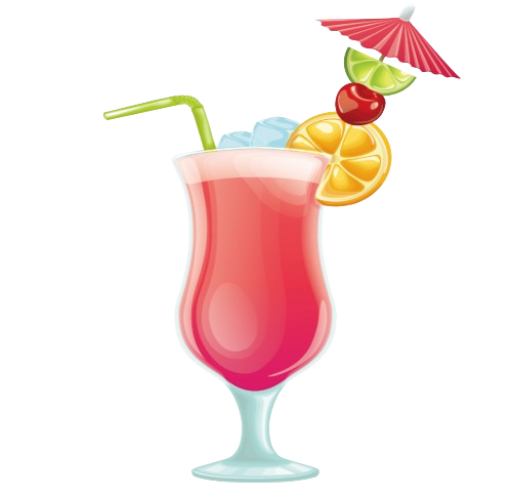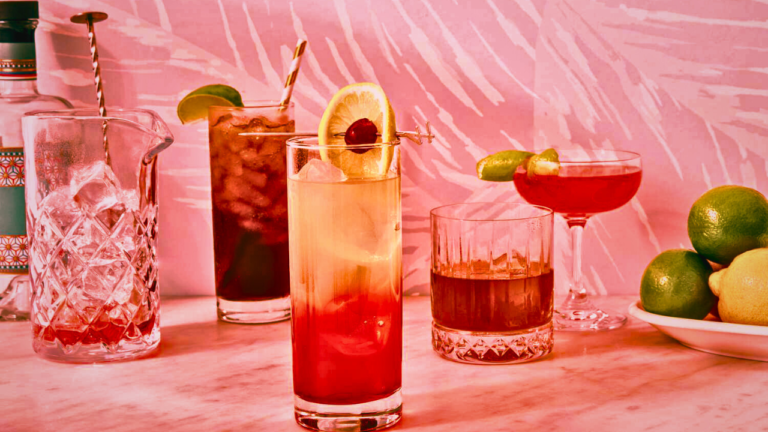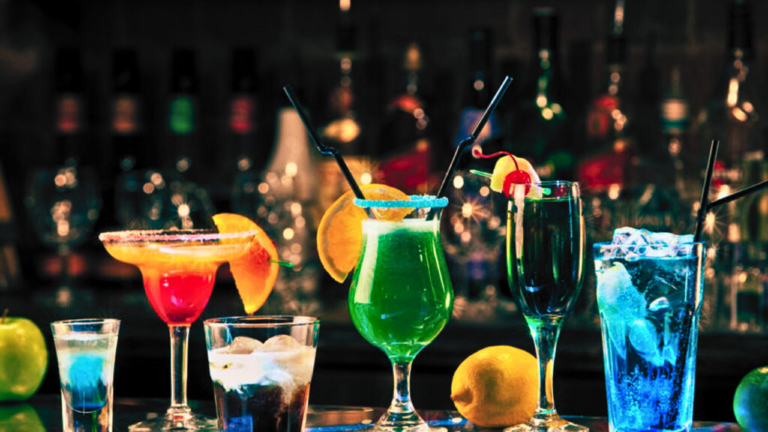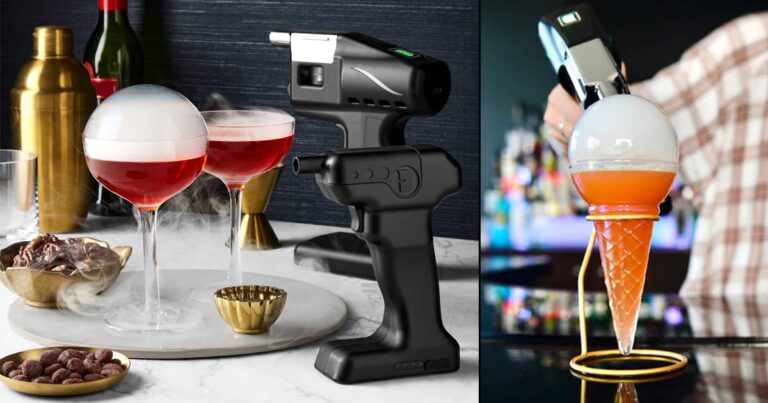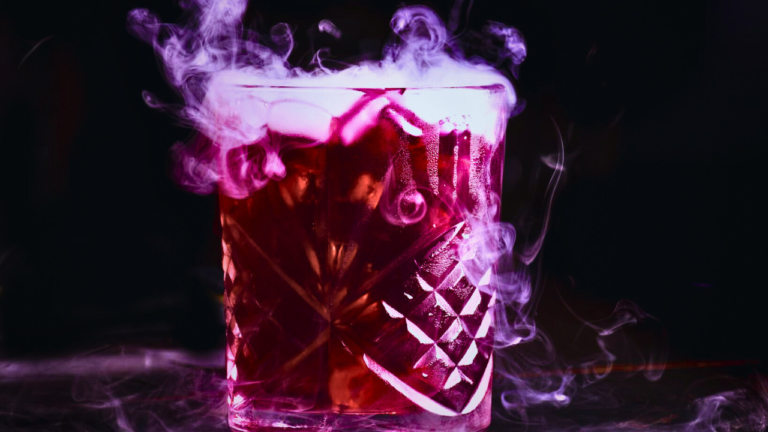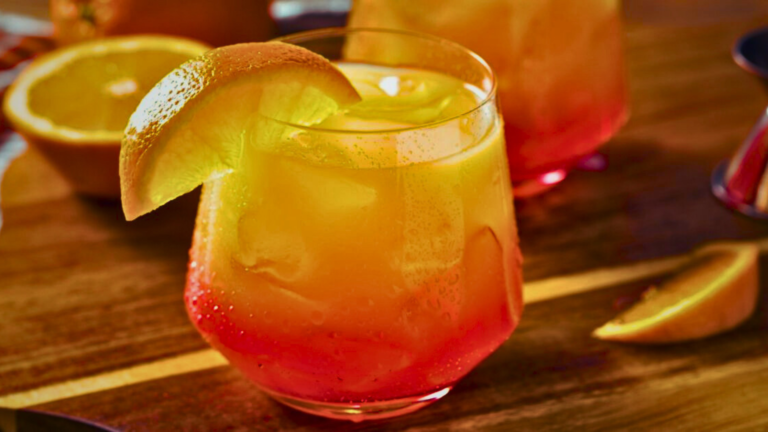Why Is Club Soda Used In Cocktails?
Have you ever wondered why, while creating your favorite cocktail, most bartenders automatically go for that reliable bottle of club soda? It could appear to be just another bubbly beverage to many people. Actually, though, it does more than just slake your thirst. Here are the reasons why club soda is essential to creating the ideal cocktail:
First of all, club soda gives your cocktail a delightfully refreshing texture by adding fizz. This feature works well with recipes for effervescent cocktails, adding vibrancy and liveliness to every sip.
“No other component can give a cocktail the shine that club soda can. Renowned mixologist Thomas Martinez claims that it “further enhances the taste and mouthfeel, transforming the ordinary into extraordinary.”
- Moreover, it acts as a diluting agent. Drinks with alcohol benefit from the balanced flavor that club soda adds without sacrificing flavor. Sometimes, alcoholic cocktails are too strong.
- It facilitates digestion. Club soda’s carbonation stimulates your stomach to help with digestion. This has a beneficial impact, particularly if you’re having cocktails with dinner.
- And lastly, the presentation is everything. A cocktail has an exciting effervescent effect and a visually appealing finishing touch when club soda is added.
Thus, do remember to toast to simple club soda the next time you have your favorite drink. It’s so easy to use, but it works so well!
Read also: What Cocktail Has The Most Ingredients?
What is the background for the use of club soda in mixed drinks?
Maybe Surprisingly
It may surprise you to learn that club soda has been a part of cocktails since the eighteenth century. It was a time when drinking water might be risky because it might be contaminated with dangerous microorganisms. In actuality, alcohol was considered to be safer to consume, and it was considered a thrill to add a little sparkle to it. Although it wasn’t quite the same as club soda as we know it now, this fizzy drink helped pave the way for its release.
Industry And Science Made Headway
The 19th century saw advances in science and industry that increased our capacity to replicate the sparkling water seen in natural springs. As a result, in the late 1780s, the Schweppes Company invented club soda. Initially marketed as “aerated water,” it gained popularity at pharmacies’ “soda fountains.”.
The Cocktail Culture
Club soda’s original use as a pleasant solo beverage started to fade away as cocktail culture took root at the beginning of the 20th century, and with it, the use of club soda as a base ingredient in cocktail mixology. The carbonation of club soda has been shown to be an excellent way to bring out the flavors in spirits that are otherwise buried and to add a desired texture to a wide range of beverages, from fizzes to highballs.
Club soda thus became ingrained in the cocktail industry. It’s important to note that, despite the fact that our knowledge of this straightforward ingredient has grown over time, its fundamental appeal has not changed: it has a hint of sharpness, a dash of effervescence, and the capacity to blend incredibly well with a variety of flavors and textures.
What special qualities does club soda add to the art of mixing cocktails?
You might think of club soda as just another carbonated beverage. False. Club soda is more than just a mixer when used skillfully by a bartender; it’s an essential ingredient in cocktails that delicately improves and changes the flavor profile of your beverage. Let’s explore these qualities now!
Carbonation
The carbonation in club soda brings effervescence to your drink. Those little bubbles create a lively and pleasing sensation on your tongue and enhance the overall cocktail experience. Not to mention, carbonation can improve the aroma-transporting capabilities of your beverage, inadvertently boosting the perceived flavor.
Taste of Nothing
Club soda tastes almost exactly like nothing at all, in contrast to flavors like ginger beer or tonic water. It enables you to add or change tastes without compromising the integrity of your mixed drink’s flavor profile. It only takes a backseat so that other ingredients can take center stage.
Diluting
Dilution is one of club soda’s main uses in cocktails. It lessens the alcohol’s strength, which smooths and balances the drink. Drinks can be made to order using this precise dilution to suit individual preferences. You can change the drink’s potency by changing the ratio of soda to alcohol.
Stretch and Volume
The capacity of club soda to increase drink volume without sacrificing flavor is another useful advantage. Diluting club soda with alcohol essentially extends the drink, reducing its strength and prolonging its finish. Additionally, this will give your cocktail a pleasant, foamy finish.
Never undervalue this unassuming bottle of fizzy water—club soda is a powerful force in the world of mixing cocktails! The next time you raise a glass, keep in mind how important club soda is to your beverage.
Read also: What Are The 5 Most Popular Cocktails?
What effects does club soda have on the flavor and consistency of different cocktails?

Club soda quietly provides a counterbalance to the other ingredients in a well-made cocktail, allowing them to come together harmoniously. This essentially plain drink is key to giving your cocktails a unique and enjoyable texture. Why, then, can club soda have such a magical effect on texture and taste?
Alcohol Interaction
Club soda is a great counterbalance to the harshness of alcohol because of its subtle, nearly undetectable flavor and effervescent texture. Instead of competing for supremacy, it plays support, letting the flavors of the other components shine through. As a result, your cocktail becomes a harmonious mixture rather than a struggle of disparate flavors. This explains why club soda is frequently added to strong cocktails to lessen the strong alcoholic flavor and give the drink a smoother, richer texture.
Using the Taste Buds
The sparkling carbonation of club soda stimulates the palette in a variety of ways. In addition to improving flavor, it produces a unique sensation as the bubbles pop, stimulating the tongue and adding even more pleasure to the drinking experience. This gives the palate a thrilling, zesty, and invigorating experience with your cocktail.
Enhancement of Texture
Your cocktail’s texture is just as important as its flavor. The club soda’s effervescence produces a lighter, frothier mouthfeel. This bubbly component may turn a boring, flat cocktail into something fun and vibrant, giving you a pleasant, zingy experience with every sip.
Changing the Power
Lastly, adding club soda to your cocktail might change its strength, particularly for highball drinks. The drink will be less strong and concentrated the more club soda you add. This lets you adjust the cocktail’s strength to suit your tolerance or taste preferences.
It is evident that Club Soda’s contributions are not limited to filler. It’s a crucial stylistic tool that molds your cocktail’s flavor, texture, and overall sensory impression. Therefore, keep in mind that club soda plays an important part in the creation of your favorite cocktail the next time you make it.
Which well-known cocktail recipes call for club soda?
Cocktails are interesting concoctions, and it’s fun to observe how various ingredients combine to make the ideal libation. Due to its neutral flavor and effervescence, club soda is a necessary component of many well-known cocktail recipes. Now let’s explore a few of the widely used mixtures that you can make yourself at home.
The Traditional Mojito
Nothing is more refreshing than a traditional mojito! To make this delicious Cuban beverage, mix white rum, sugar, club soda, lime juice, and mint. In addition to increasing the volume of the drink, the club soda gives the mixture a cool pop of fizz.
Collins, Tom
This classic cocktail, named for the fabled man who was never real, consists of gin, sugar, lemon juice, and club soda. Its perfect balance of tart, sweet, and effervescent flavors makes it a favorite for every situation. In a Tom Collins, the club soda softens the taste of the gin, making it incredibly smooth.
Highball with Whiskey
This one should be a mainstay on your bar menu for all of you whiskey enthusiasts! A tall glass filled with a mixture of whiskey and club soda is called a whiskey highball. Club soda enhances the natural tastes of the whiskey while diluting its power and imparting a softer taste.
Aperitif Spritz
Loved in Italy, the Aperol Spritz strikes the ideal mix between sweet and bitter notes with a dash of sparkling club soda. Aperol, prosecco, and club soda combine to make a bright, crisp aperitif that’s perfect for enjoying outside.
Paloma
Traditional Mexican tequila, lime juice, grapefruit soda, and a dash of club soda are combined to make the Paloma. It’s a stunning illustration of how club soda can add a delightfully crisp finish and effervescence to a cocktail, making every sip an exquisite sensory experience.
These are but a few recipes to get you started. Use your imagination! Club soda is a great way to give your cocktail experiments a little more zing. Now it’s your chance to stir, shake, and drink!
What are the opinions of professional mixologists about the use of club soda in cocktail creation?
Any knowledgeable mixologist will gladly start a passionately educational discussion when you inquire about the essential function of club soda in creating cocktails.
Bill Carlson, a seasoned mixologist, calls club soda the “unsung hero” of cocktail creation. “Cocktail making would lack its effervescent character without club soda,” he argues. It’s similar to giving a drink more vigor and character. It’s also a fantastic tool for directing taste and linking flavors.”
Composition Harmony
Clara Klein, a mixologist in Manhattan, agrees with Carlson. She draws attention to the way other ingredients interact with club soda. “Club soda does more than just dilute stronger flavors,” she asserts. It contributes to the harmony of all the components in a cocktail, making it well-balanced and well-rounded.”
According to both experts, club soda possesses an extraordinary ability to combine seemingly unrelated flavors, resulting in cocktails that are both surprising and satiating to the palate.
Including a Visual component
Another fascinating viewpoint is provided by London-based mixologist Pete Samuels, who is well-known for creating visually striking concoctions. According to Pete, “Club soda gives cocktails a vibrant visual element.” The correct color of alcohol or liqueur paired with the bubbles can create a visually appealing cocktail that tempts the consumer to take a sip before they even taste it.” Club soda’s aesthetic appeal enhances the drinking experience overall, elevating it above a simple gustatory experience.
Club soda is unquestionably much more than just a way to stay hydrated; it’s an essential component that both improves and balances the flavor of a drink. Club soda continues to be a reliable element in the toolbox of mixologists as they experiment and push the limits of creating cocktails.
Read also: What Are The 5 Methods Of Making A Cocktail?
In summary
In conclusion, it is evident that club soda is much more than just a typical mixer in the world of mixed drinks. Its contribution to your favorite cocktail’s taste enhancement, texture addition, and overall balance cannot be overstated. It goes beyond its straightforward formulation to become a crucial instrument in the toolbox of any mixologist. Therefore, the next time you’re enjoying a fizzy cocktail, stop and consider the supporting role that club soda plays in creating a harmonious flavor symphony in your drink.
Accepting the essential role of club soda will improve your cocktail experience, whether you’re a professional bartender striving for the ideal palate stimulation, a home mixology enthusiast hoping to improve your drinks, or just a lover of cocktails wanting to know what goes into your beloved beverage.
Recall the proverb that goes, “The devil is in the details.” Club soda appears to be one of those important components in cocktails. Continue to explore, experiment, and relish the wonderful world of cocktails while keeping in mind the pivotal role that club soda plays.
FAQs
Does using club soda lessen the strength of drinks?
In a technical sense, sure. It lessens the potency of alcoholic beverages without changing their flavor profile.
Which drinks work best with club soda added to them?
The Mojito, Tom Collins, Whiskey Highball, Aperol Spritz, and Paloma are a few of them.
Is it possible for club soda to spoil?
Club soda can lose its fizz with time, even though it doesn’t spoil in the conventional sense. To ensure optimum freshness, always refer to the best-before date.
What is the main purpose of club soda in mixed drinks?
Club soda offers volume, carbonation, dilution, and flavor neutrality. It facilitates the tasteful blending of various ingredients in cocktails.
Does mixing drinks require the use of club soda?
Depending on the cocktail’s recipe, yes. While some drinks might require the unique qualities that club soda provides, others might not.
Does drinking club soda impact how hydrated you are after drinking alcohol?
Yes, in a limited sense. Club soda’s water content may aid in bodily hydration, hence mitigating the drying effects of alcohol.
Why is club soda commonly used in cocktails?
Club soda is a popular mixer in cocktails because its carbonation adds a refreshing fizz to drinks without altering the overall flavor profile. It can enhance the taste of spirits like vodka and gin while providing a light and bubbly texture.
What is the difference between tonic water and club soda in cocktails?
While both tonic water and club soda are carbonated beverages, tonic water contains quinine, which gives it a distinct bitter taste. Club soda, on the other hand, is simply carbonated water without any additional flavorings, making it ideal for mixing with various spirits.
How can I incorporate club soda into my cocktail recipes?
You can use club soda in cocktails to create effervescent beverages that are both refreshing and flavorful. It works well in classic drinks like vodka soda or can be added to gin cocktails for a light and fizzy twist.
Is club soda the same as sparkling water or seltzer?
While club soda, sparkling water, and seltzer all fall under the category of carbonated water, they do have slight differences. Club soda often contains added sodium bicarbonate, giving it a slightly salty taste compared to regular sparkling water or seltzer.
Can club soda be used as a mixer in non-alcoholic beverages?
Absolutely! Club soda is versatile and can be used as a mixer in both alcoholic and non-alcoholic drinks. Its carbonation and subtle flavor make it a great addition to mocktails and refreshing fruit-based beverages.

Hello, friends! I’m Tom Elba, the driving force behind cocktailscape.com, your virtual hub for all things cocktails. If you have a passion for mixology or simply enjoy sipping on a well-crafted drink, then you’ve landed in the right place.
At Cocktailscape, I’m dedicated to sharing my love for the art of cocktail-making through tantalizing recipes, expert tips, and vibrant stories from the world of mixology. Whether you’re a seasoned bartender or an enthusiastic home cocktail enthusiast, there’s something here for everyone.
From classic concoctions like the Old Fashioned and the Martini to innovative twists and modern creations, I’m here to inspire you to shake, stir, and sip your way through a world of flavor.
But Cocktailscape is more than just recipes—it’s a celebration of culture, creativity, and community. I delve into the history behind iconic cocktails, explore emerging trends in the industry, and spotlight talented bartenders from around the globe.
So whether you’re looking to expand your cocktail repertoire, host the perfect soirée, or simply unwind with a refreshing drink after a long day, Cocktailscape has got you covered. Cheers to endless possibilities and unforgettable sips—let’s raise a glass together at cocktailscape.com!
